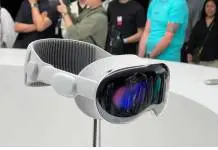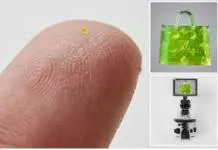Intel, one of the leaders in the computer industry, is giving it a try at smart glasses that actually look normal. The glasses, named Vaunt, are nearly indistinguishable from regular glasses.
This isn’t the first attempt by a tech corporation to create smart glasses, but industries seem to have taken a break from experimenting with them as Google Glasses and the Snap Spectacles didn’t have the best result when it came to sales.
Intel intends to change the smartglasses industry by creating a simple pair of spectacles, making them as simplistic as possible, but adding some interesting features users have yet to see.
With no official launch or release date confirmed, so far there are only prototypes of Vaunt, and the finished product is yet to be released and unveiled. Intel plans to make Vaunt a revolutionary product that marks a difference, and it may very well be a future must have in the near future.
Here are Intel’s smart glasses, called Vaunt. I tried some prototypes for a day in December.
They’re not at all what you’re expecting. https://t.co/NQqYOiEfSX pic.twitter.com/Z7RaXDmBfv
— Dieter Bohn (@backlon) February 5, 2018
Why does Intel want in on the smartglasses market?
Intel hasn’t shared much details of what the features of the product will officially be, nonetheless, their main intention of the finished product is quite clear. Itai Vonshak, head of products for NDG told The Verge, “We really believe that it can’t have any social cost, so if it’s weird, if you look geeky, if you’re tapping and fiddling — then we’ve lost.”
Intel intents to bet on less is more, as they think the simpler, the better, spectacles should be fashionable and not head-gear looking products.
I have no idea if Intel Vaunt glasses have a shot, but I do know that they’re the only pair of smart glasses I’ve tried that won’t make everybody around me want to steal my lunch money.
https://t.co/wlW4RTdCvx pic.twitter.com/Jj1zuxTdRC— Dieter Bohn (@backlon) February 5, 2018
What Vaunt might bring to the table
Vaunt works in an apparently straightforward way, as it shines a first class laser into your eyes that creates an image (a laser with such a low force Intel says they don’t even need to get a license for), and since it’s directly shining into the retina, the image displayed should always stay in focus. From then on, the user just needs to tailor the glasses into their face and they’re set.
The company also wants to make the glasses noninvasive, which means an image appears only when the user wants it to appear. “We have it about 15 degrees below your relaxed line of sight. … An LED display that’s always in your peripheral vision is too invasive,” says Mark Eastwood, NDG’S industrial design director, “the beauty of this system is that if you choose not to look at it, it disappears. It is truly gone.”
It is still unclear as to how one will interact with Vaunt as the software is not fully done and not many details have been said about what it will include. However, it is possible the glasses will be working with the use of BlueTooth and may be paired with smartwatches, smartphones, or even smart homes.
Source: The Verge










